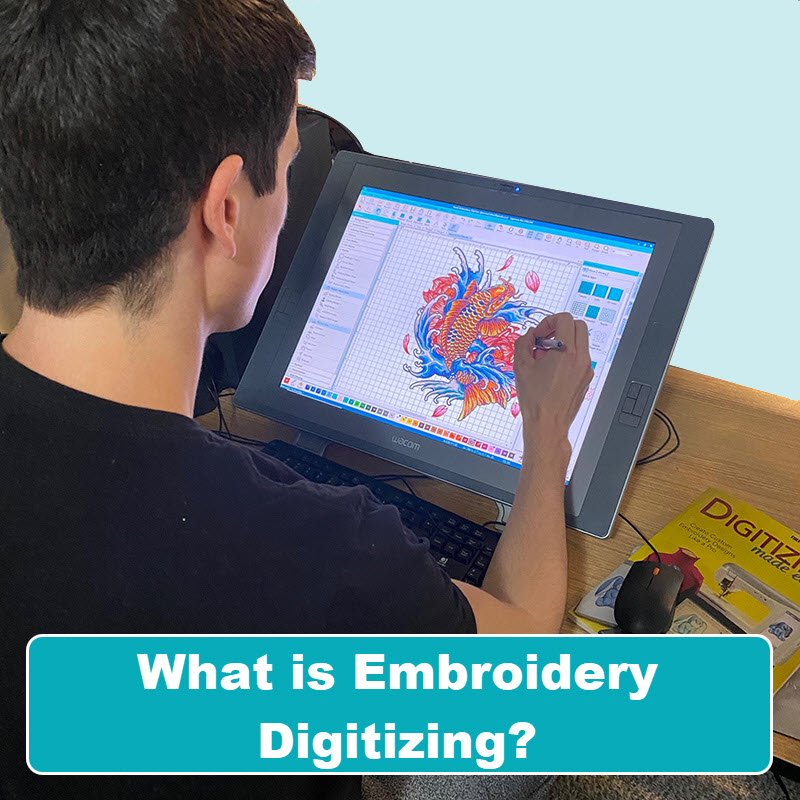Cost Effective Digitizing for Embroidery: Accuracy and Information
Cost Effective Digitizing for Embroidery: Accuracy and Information
Blog Article
Understanding the Embroidery Digitizing Process: Your Ultimate Overview
Needlework digitizing is a thorough craft that calls for precision and knowledge to equate complex styles right into electronic styles for maker needlework. As craftsmens get started on this trip to understand the embroidery digitizing process, a comprehensive understanding of the basics sets the structure for quality.

Understanding Embroidery Digitizing Essentials
Embroidery digitizing basics form the structure upon which detailed styles are equated into machine-readable layouts for exact sewing. This preliminary step in the embroidery digitizing process is important for making sure that the final embroidered item is a faithful depiction of the original style. Recognizing embroidery digitizing fundamentals includes realizing vital concepts such as stitch types, stitch instructions, thickness, padding, and pull settlement.
Sew types play an essential role in establishing the aesthetic and textural end result of the embroidered style. By choosing the ideal stitch type, whether it be satin, fill, or running stitch, digitizers can achieve the preferred impact and enhance the total top quality of the embroidery. In addition, sew instructions affects the flow and dimension of the layout, while density identifies the spacing and protection of the stitches.
Moreover, rug sewing gives security to the design by securing the fabric and preventing distortion during the needlework process. Pull compensation is another vital consideration to combat the all-natural propensity of material to agreement when sewn. Grasping these embroidery digitizing fundamentals is fundamental for developing professional-quality embroidered products.
Choosing the Right Digitizing Software Application
Picking the ideal digitizing software application is a critical decision that considerably influences the performance and high quality of the needlework digitizing process. Digitizing for Embroidery. When selecting the best digitizing software application, it is necessary to consider factors such as the intricacy of designs you intend to develop, the user-friendliness of the software program, the degree of consumer support provided, and the compatibility with your embroidery device
There are various digitizing software choices readily available on the market, varying from fundamental programs for novices to innovative software program for professional digitizers. Some prominent choices include Wilcom EmbroideryStudio, Hatch view Embroidery Software, and PulseID. These software offer a large range of tools and functions to help you create elaborate styles with simplicity.
Before choosing, it is a good idea to check out the different software application options through free tests or demonstrations to figure out which one finest suits your needs. Additionally, reviewing evaluations and seeking recommendations from experienced digitizers can give useful insights into the toughness and weaknesses of each software plan (Digitizing for Embroidery). By meticulously examining your demands and comparing the attributes of various digitizing software, you can make an enlightened choice that improves your needlework digitizing operations
Digitizing Devices and Strategies

Optimizing Design Settings for Embroidery
Grasping the intricacies of style settings is essential in attaining ideal outcomes in the embroidery digitizing procedure, structure upon the structure laid by recognizing my link digitizing tools and strategies. When enhancing layout settings for embroidery, it is essential to consider elements such as stitch kind, thickness, underlay, draw settlement, and registration. Registration settings line up various components of the style properly, preserving total layout integrity.

Troubleshooting Common Digitizing Issues
When encountering typical digitizing concerns during the needlework procedure, it is necessary to recognize here the root triggers and implement efficient options promptly. One typical issue is stitch thickness issues, where stitches may be also thick, causing the material to tighten, or also sparse, resulting in gaps in the layout. Changing the stitch thickness setups in the digitizing software program can help fix this problem.
An additional frequent challenge is thread breaks during the needlework procedure. This can take place as a result of various reasons such as inaccurate stress settings, boring needles, or making use of low-quality string. Guaranteeing correct maintenance of the needlework device, including routine needle modifications and stress changes, can decrease the event of string breaks.
Moreover, design registration errors can result in misaligned elements within the embroidery design. Inspecting the design alignment in the digitizing software application and making required modifications before stitching can help in avoiding this concern. By addressing these common digitizing concerns promptly and effectively, you can ensure a smoother embroidery procedure and high-quality finished products.
Verdict
Finally, grasping the embroidery digitizing process requires a strong understanding of the fundamentals, the ideal option of software application, and knowledge of devices and strategies. Enhancing design settings and repairing typical digitizing issues are essential actions in making certain top notch needlework results. By complying with these steps faithfully, one can accomplish precision and performance in the digitizing process.
Report this page